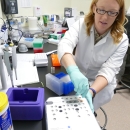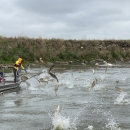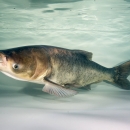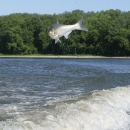The University of Notre Dame, Department of Biological Sciences, Center for Aquatic Conservation, prepared a Standard Operating Procedure (SOP) in 2010. The SOP provided details regarding eDNA monitoring protocols and was given to USACE in May 2010 in compliance with Cooperative Ecosystem Study Unit agreement #W912HZ-08-2-0014, modification P00007. In December 2009, a technical and quality systems audit of the Center for Aquatic Conservation Lodge Laboratory at the University of Notre Dame was conducted by the US Environmental Protection Agency (EPA). The laboratory audit report dated 5 February 2010 was provided to USACE in addition to the eDNA monitoring protocol. These documents served as the basis for the QAPP followed by ERDC. Additionally, USACE submitted the eDNA methodology for an Independent External Peer Review (IEPR), which is a requirement to examine decision documents and supporting work products where there are public safety concerns, significant controversy, a high level of complexity, or significant economic, environmental and social effects to the nation. Released fall of 2011, the eDNA IEPR report, conducted by objective panelists with technical expertise in genetics and population ecology, confirmed eDNA sampling and testing methodology is sound for detecting Silver and Bighead Carp eDNA but cannot indicate the source of Bighead and Silver Carp eDNA. In addition, eDNA detection results cannot provide information on the size, sex, age, or number of individuals present and cannot distinguish between pure Silver or Bighead carp and their hybrids. In 2013, USFWS WGL took over eDNA monitoring activities from the USACE and made changes to the QAPP to adapt to a high throughput processing required of a large-scale monitoring program.
Publication date
Type of document
Report
Facility
Media Usage Rights/License
Public Domain
Program
Species
FWS Focus
FWS Focus
FWS and DOI Region(s)






